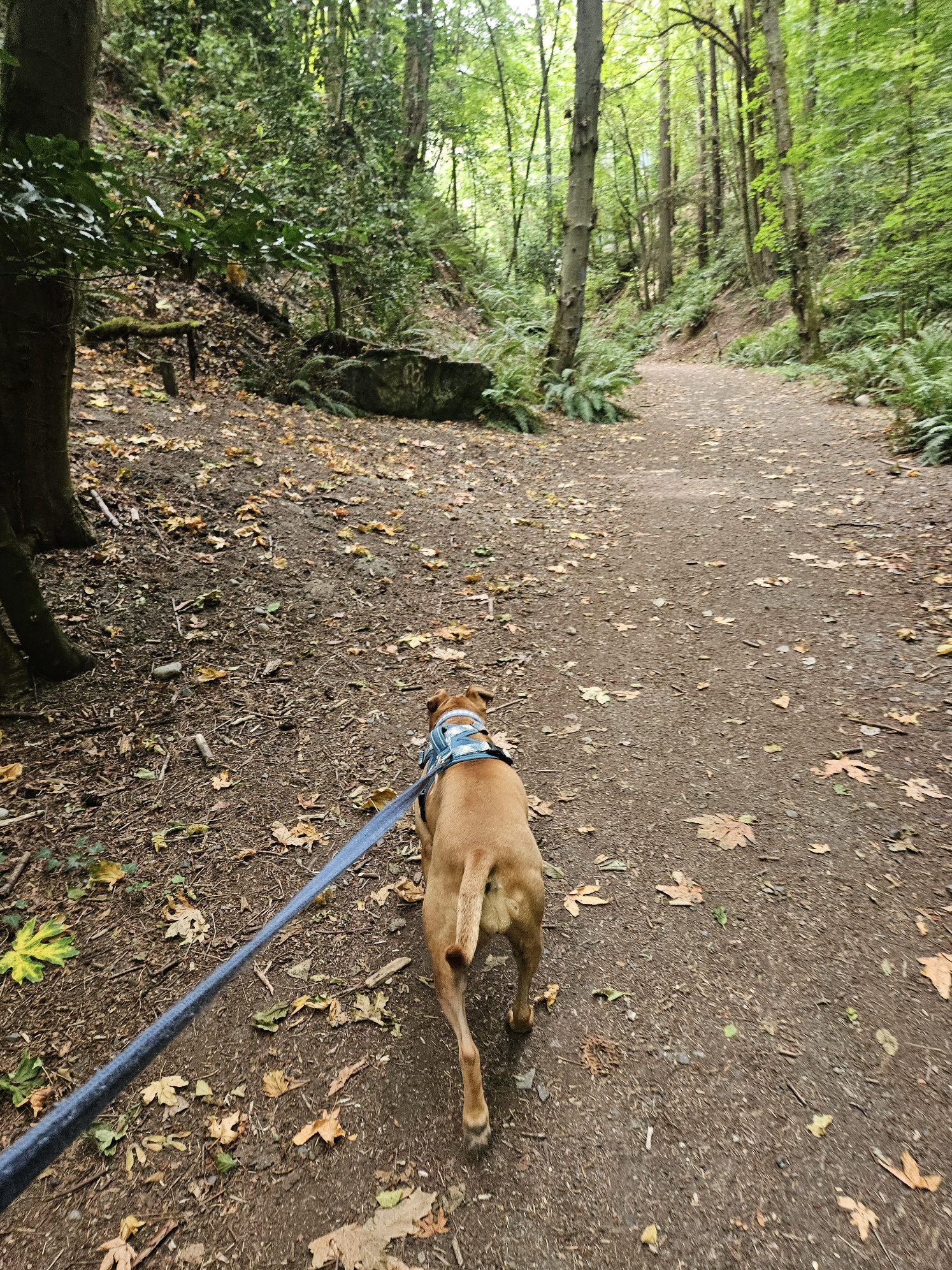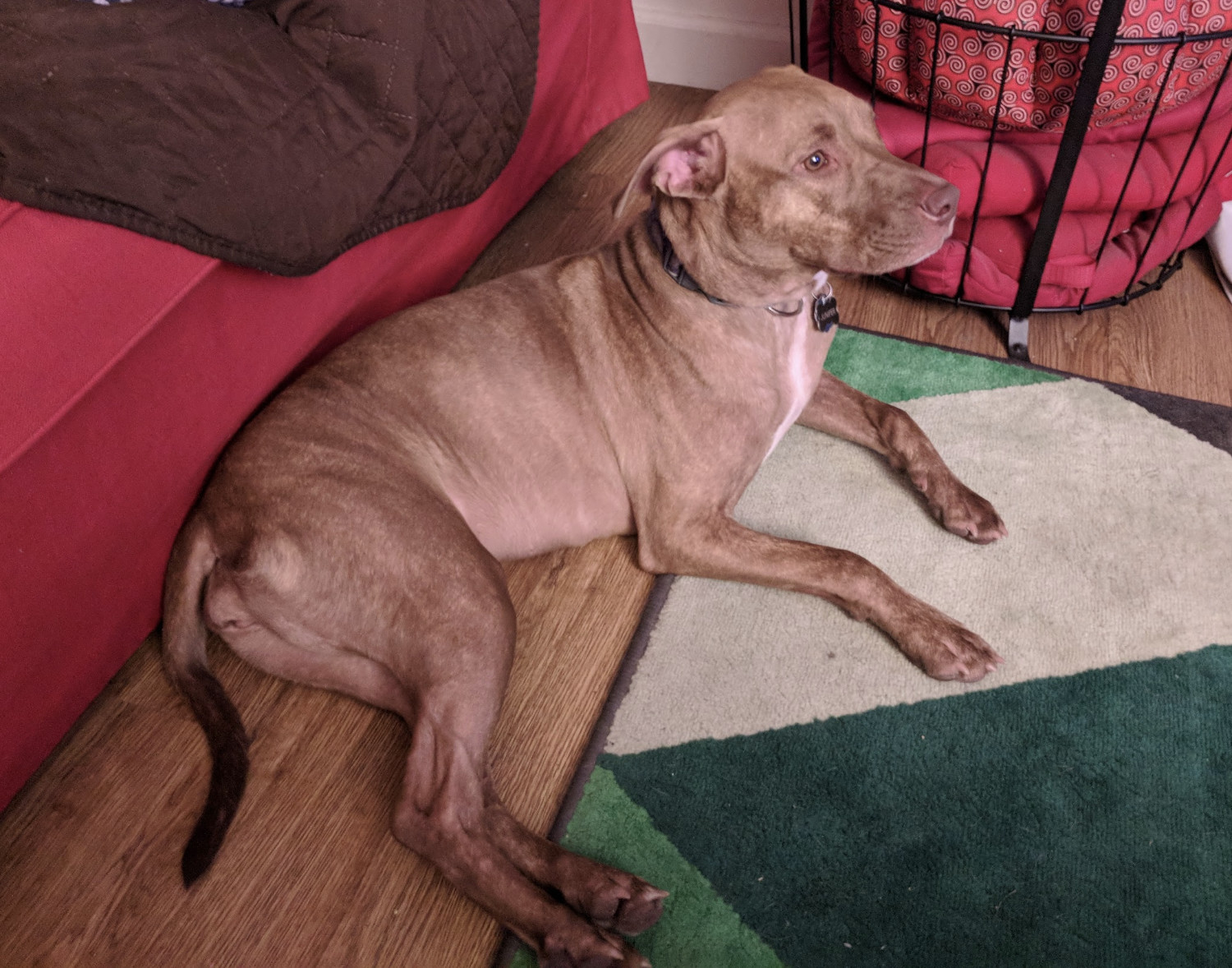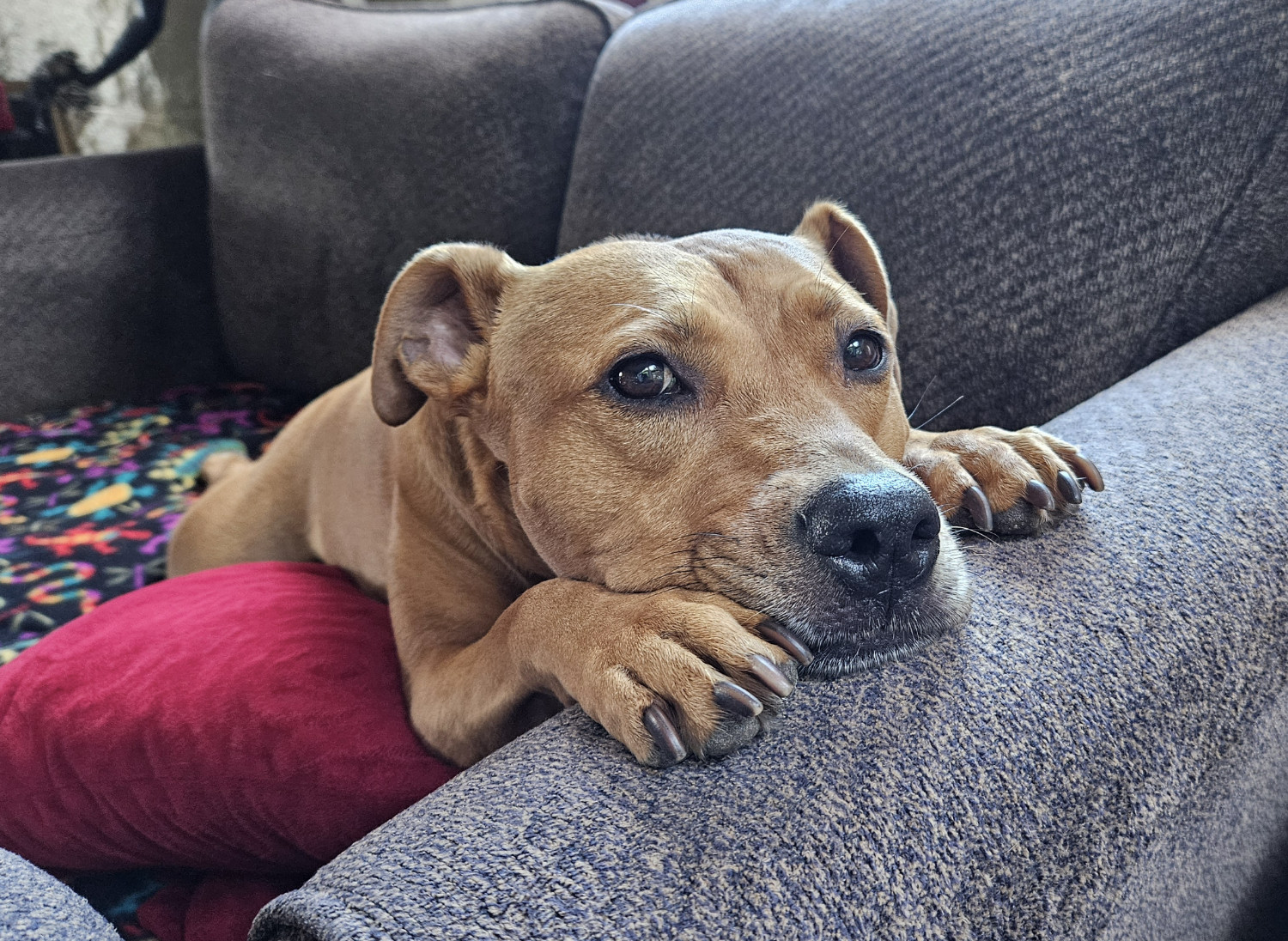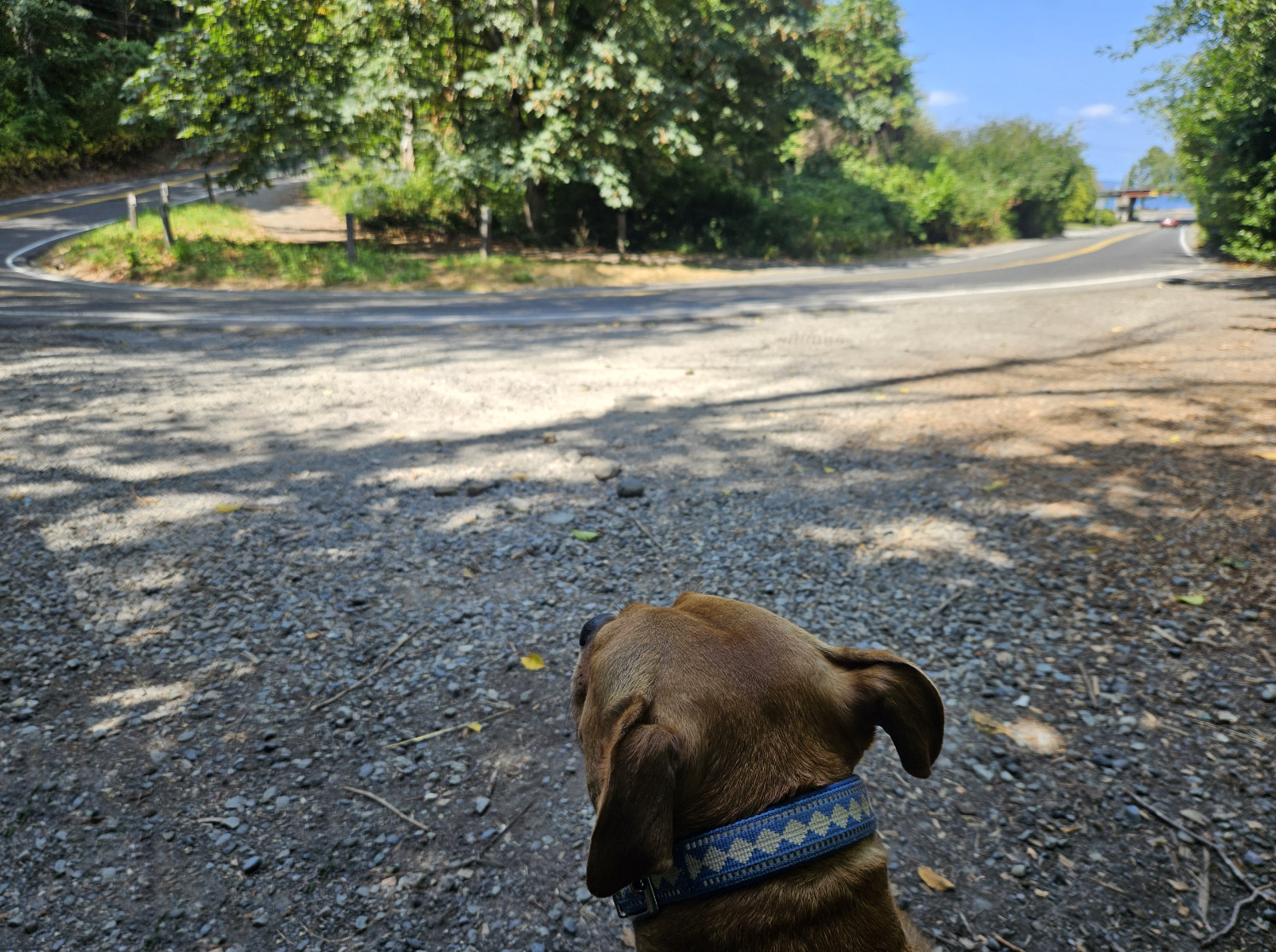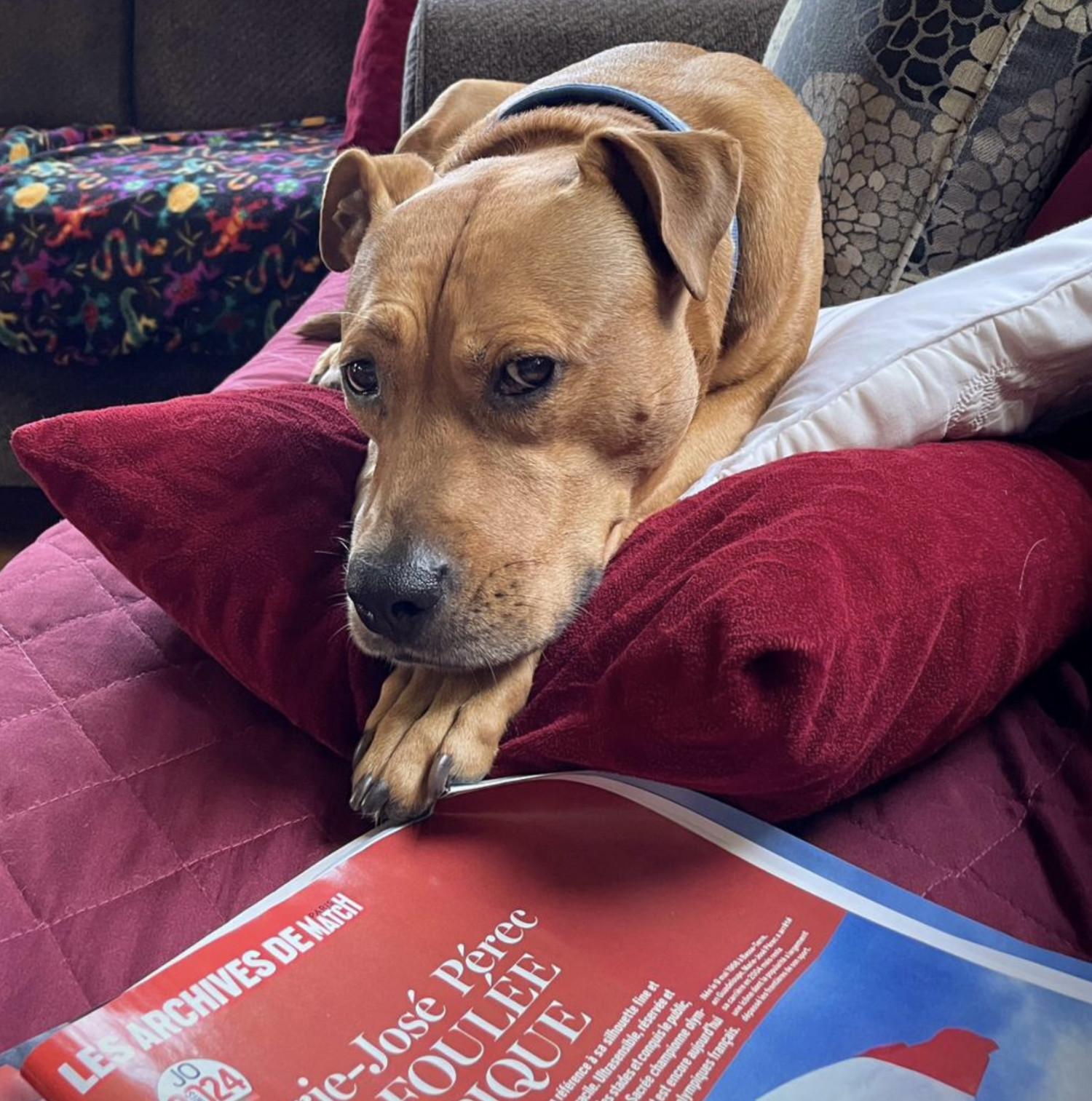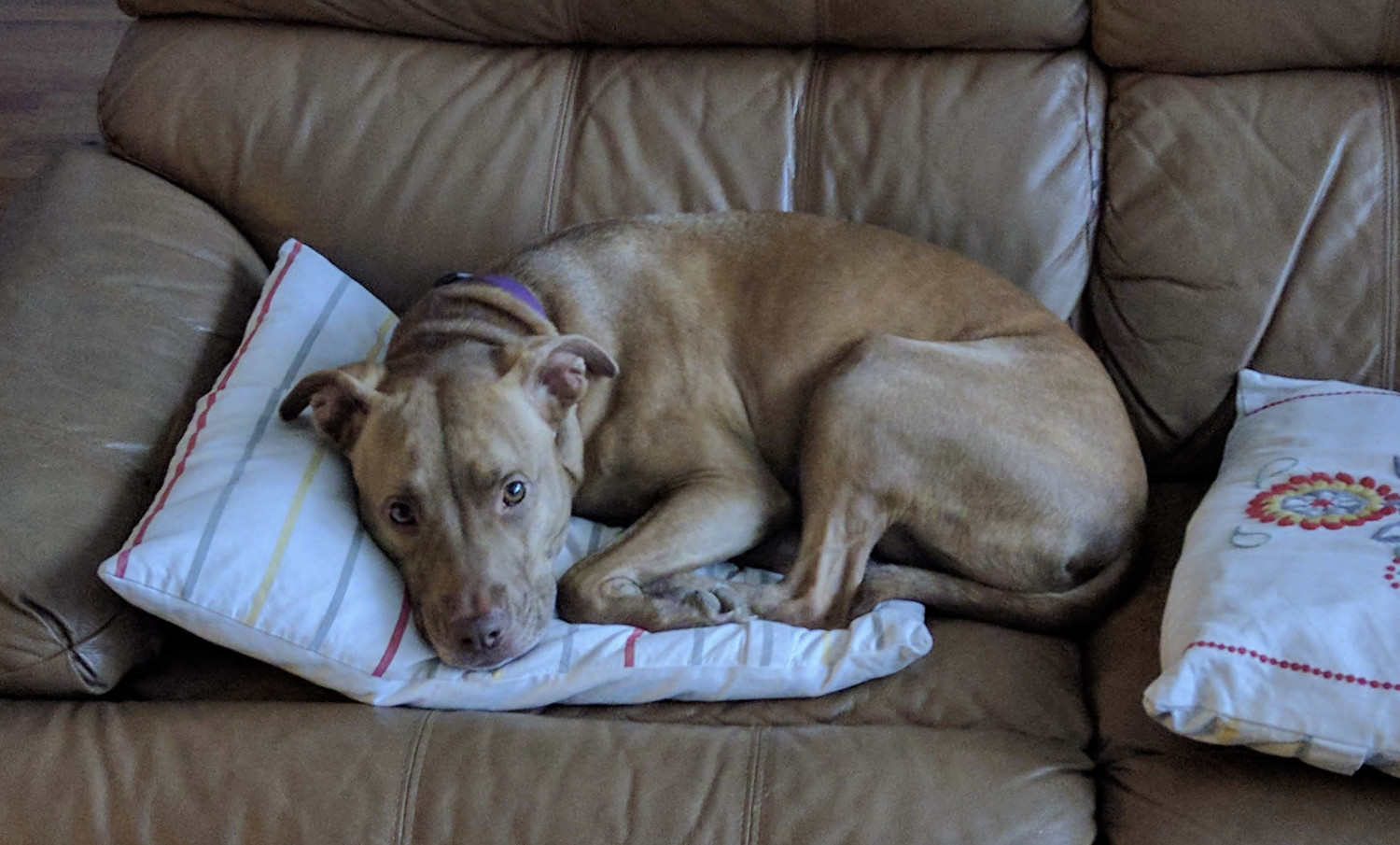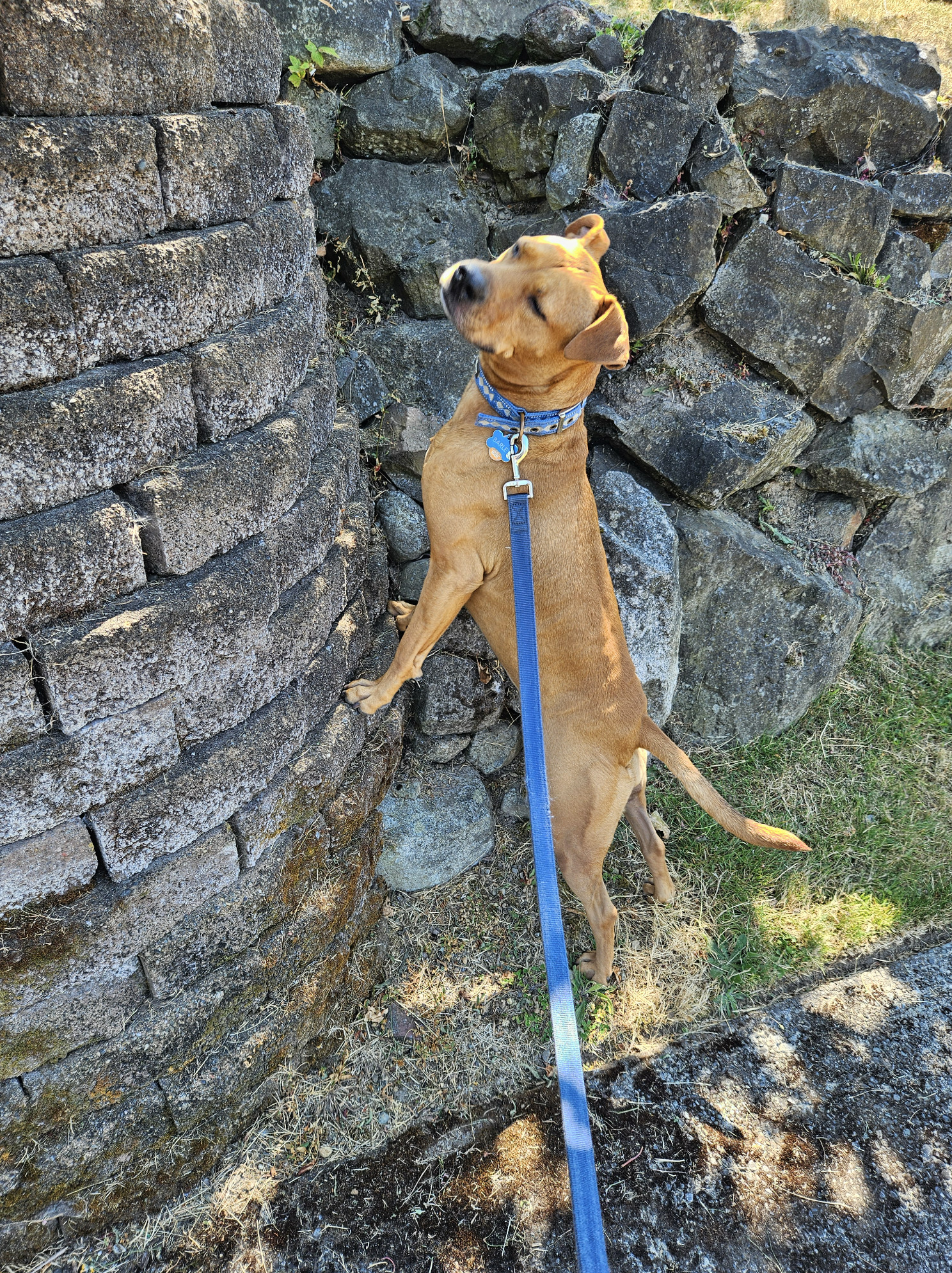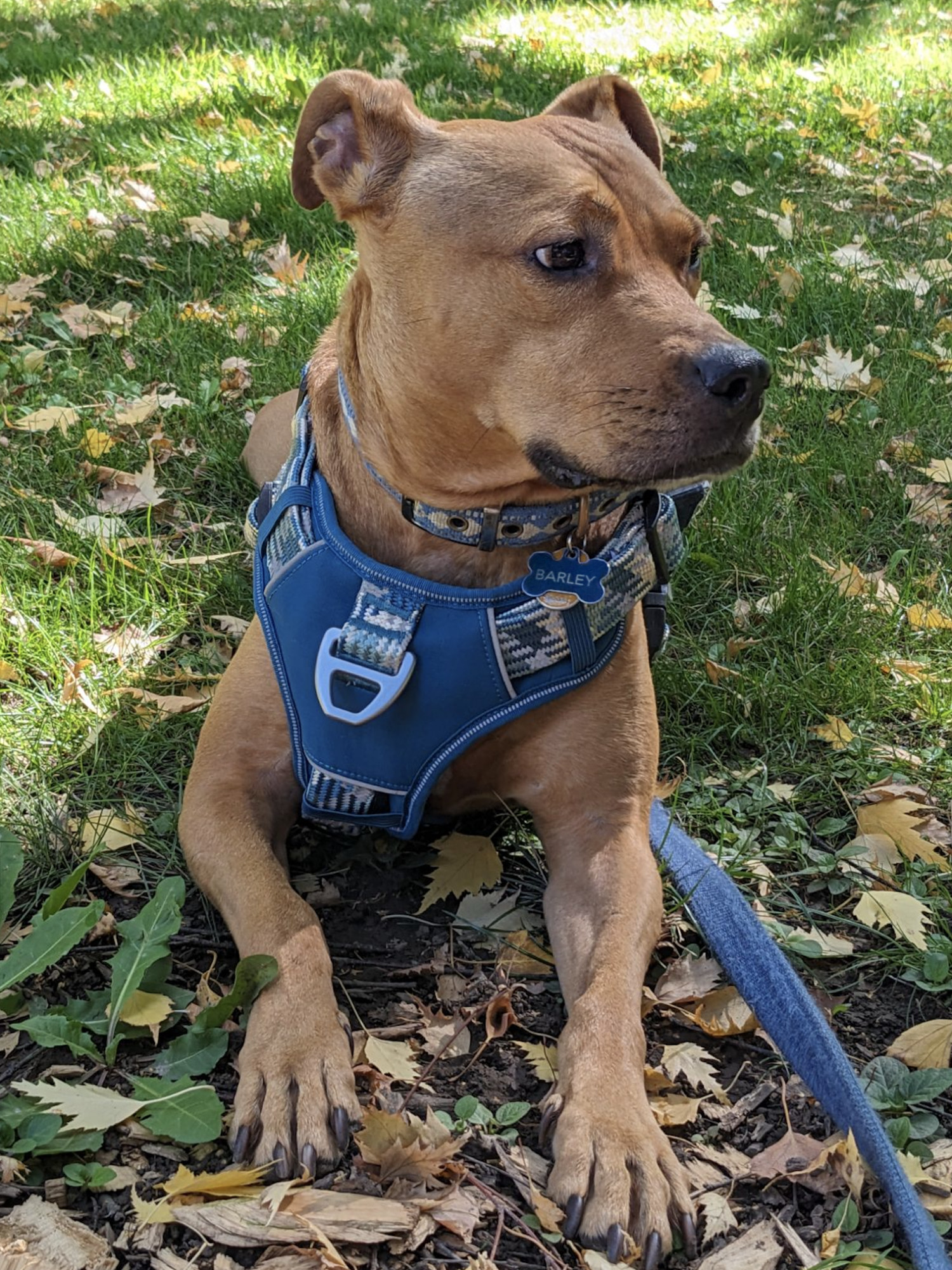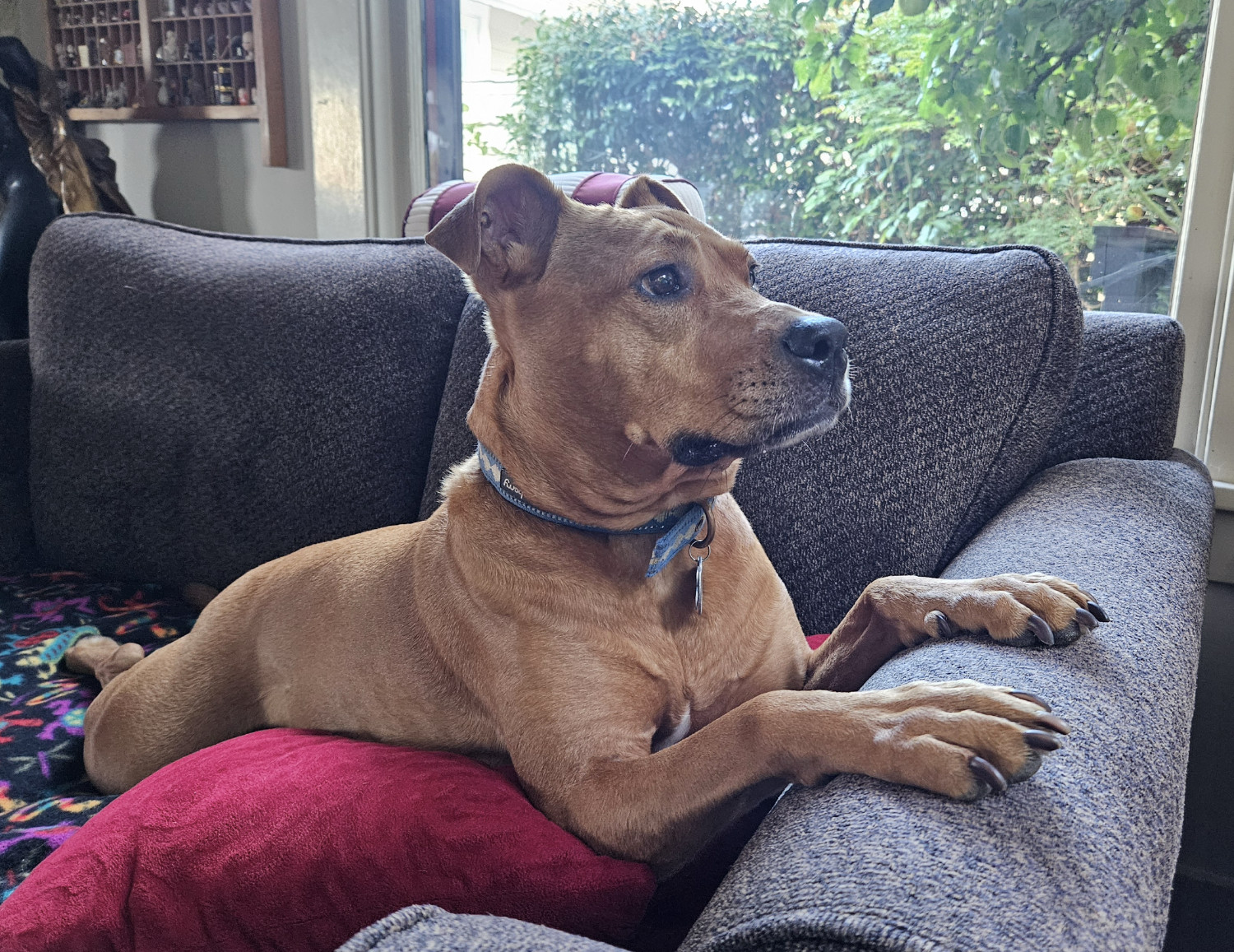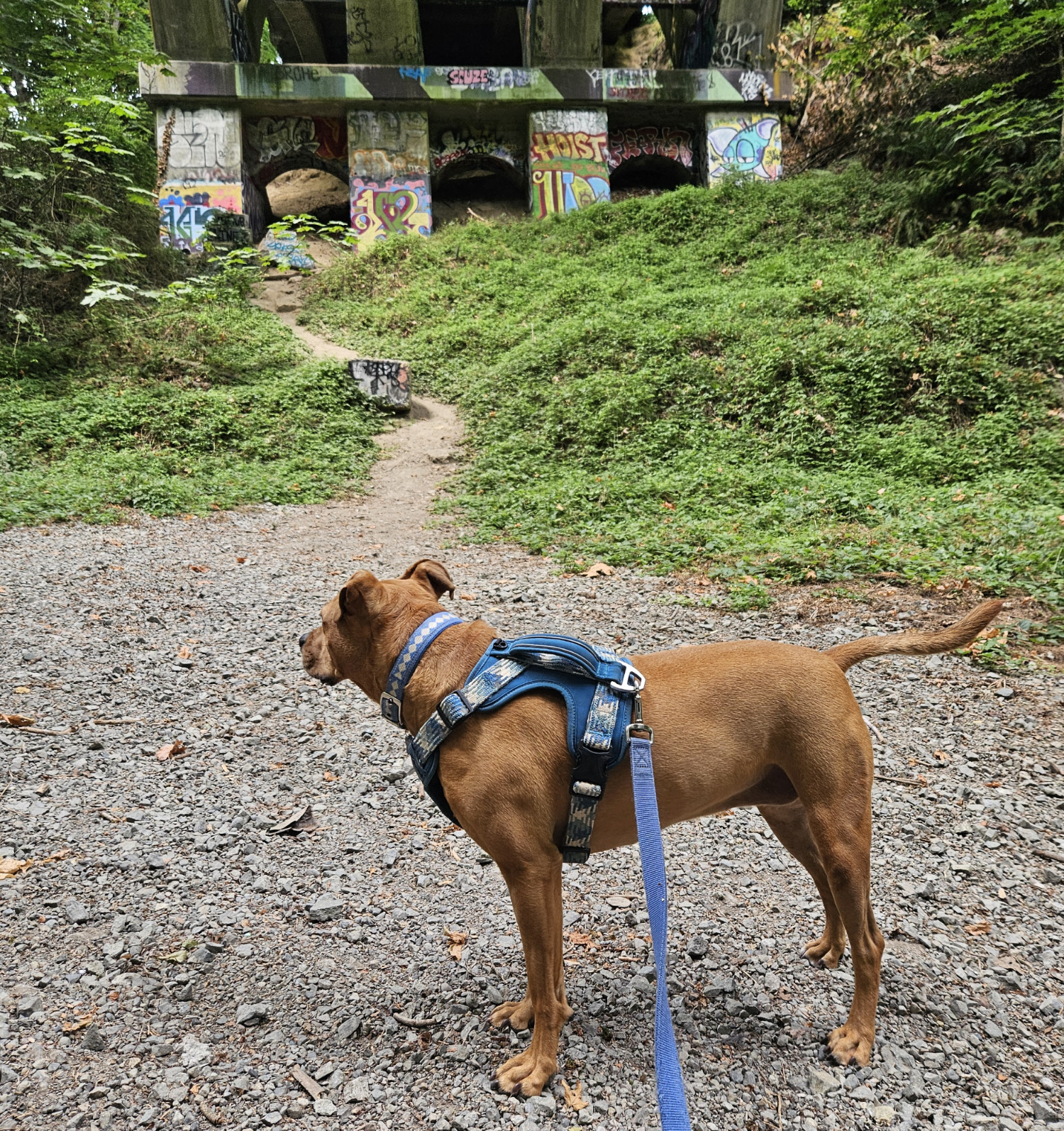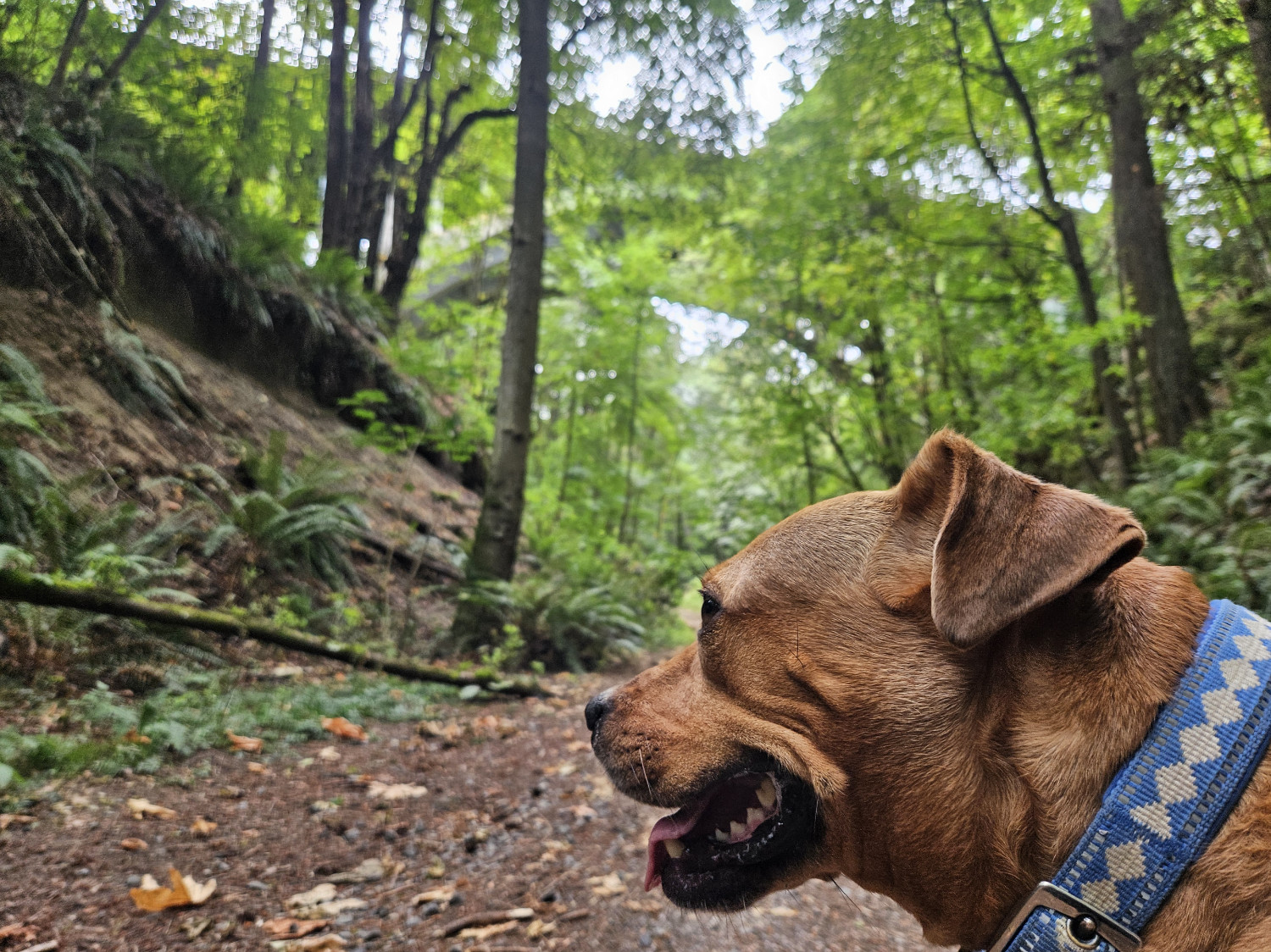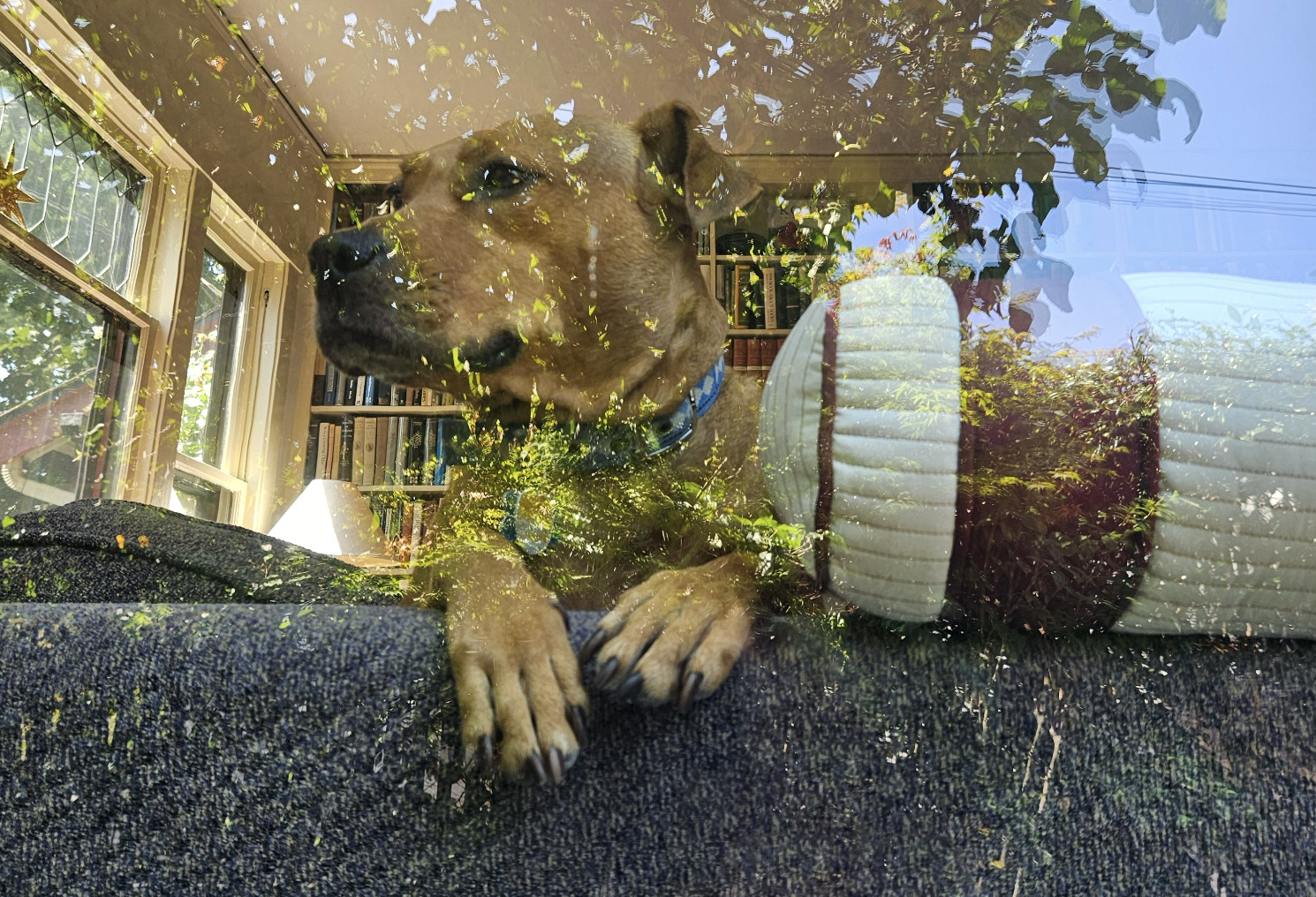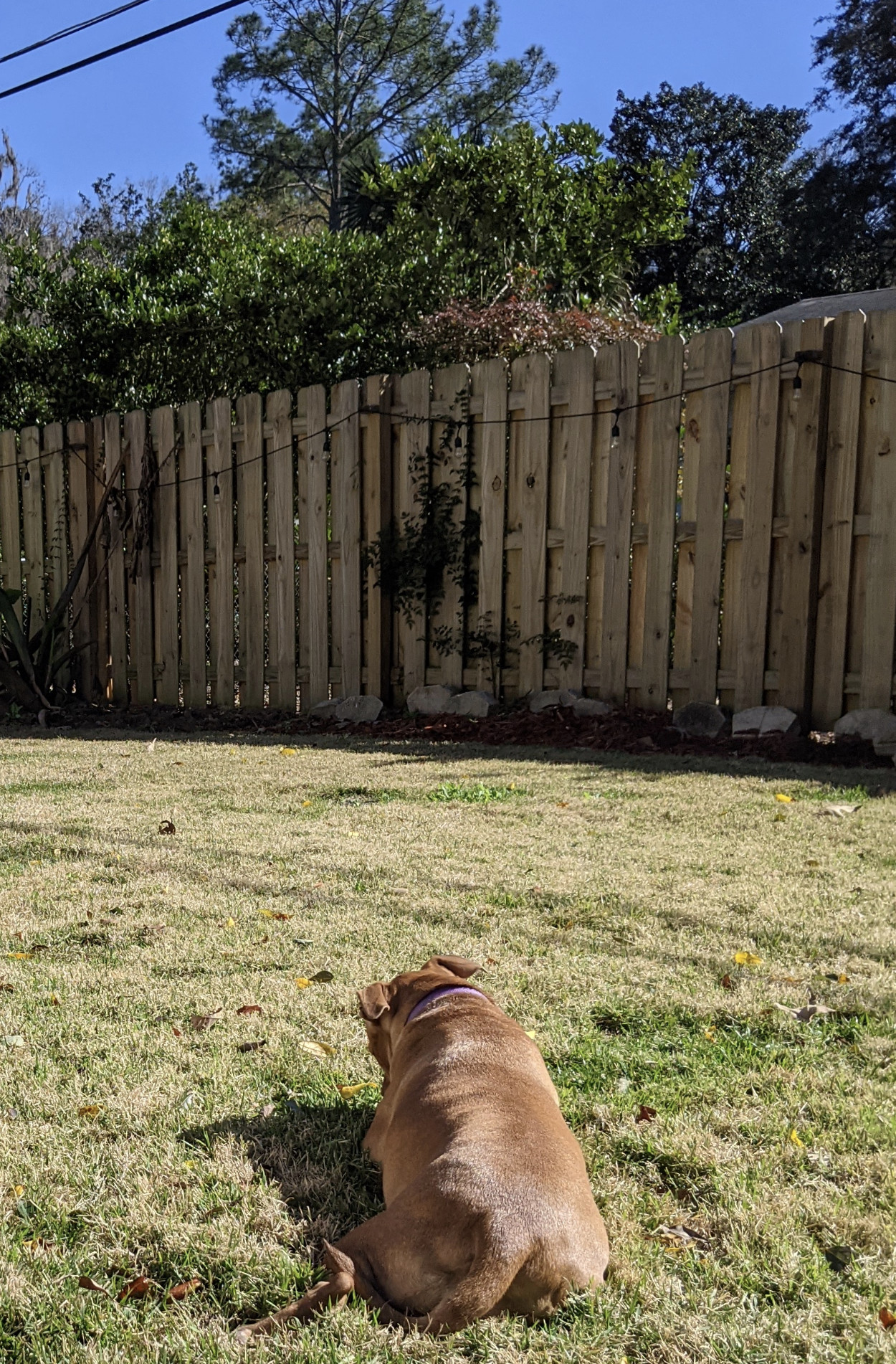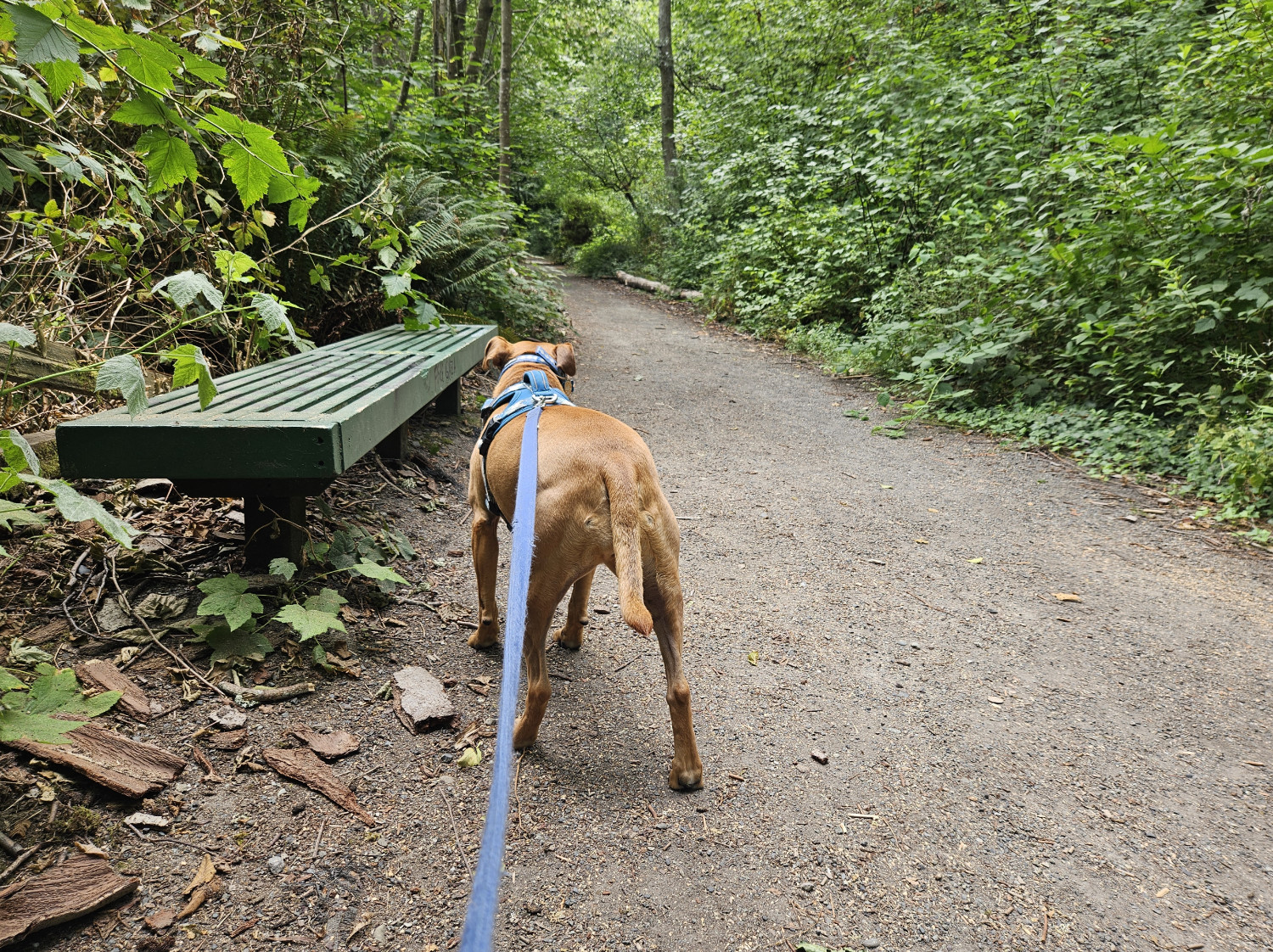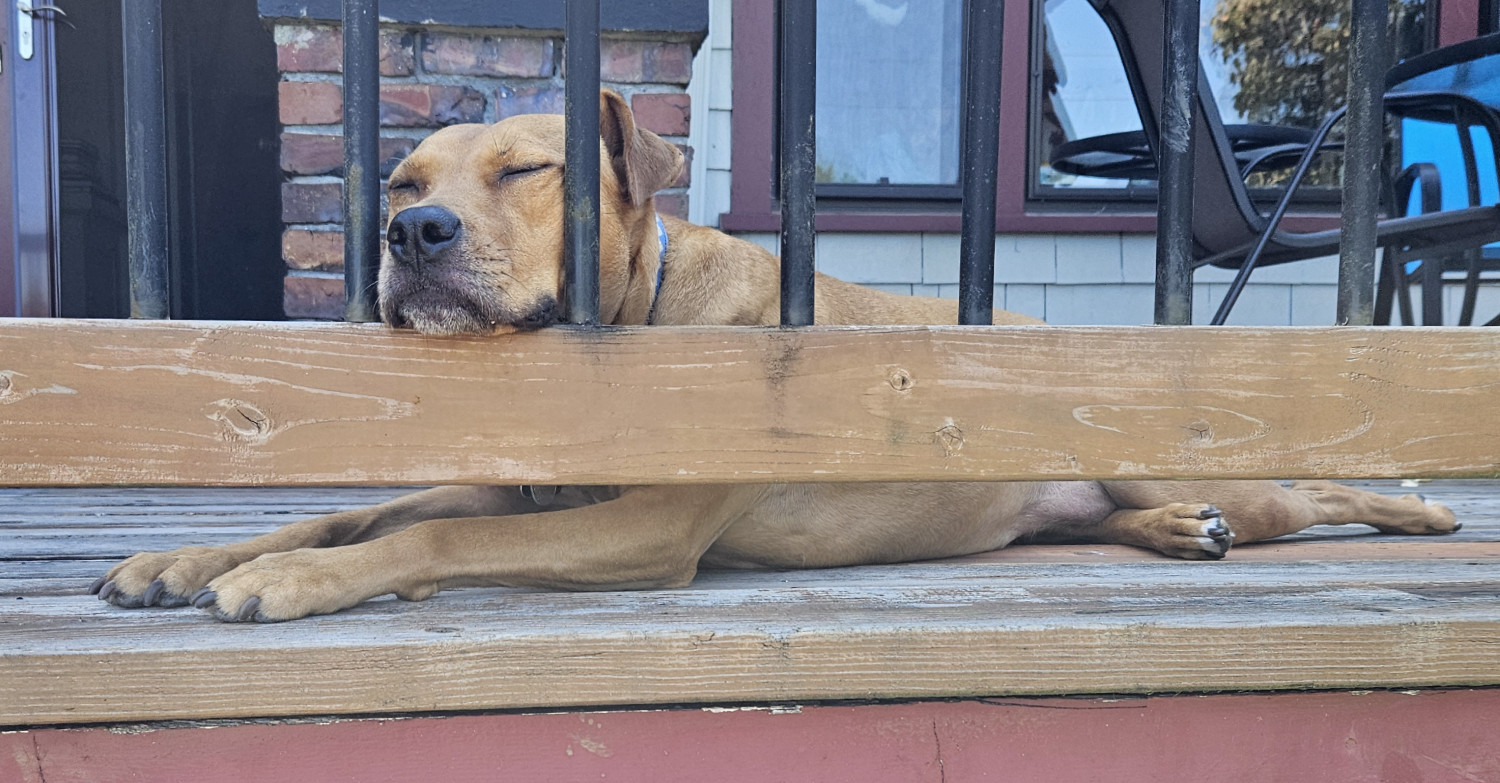Winded
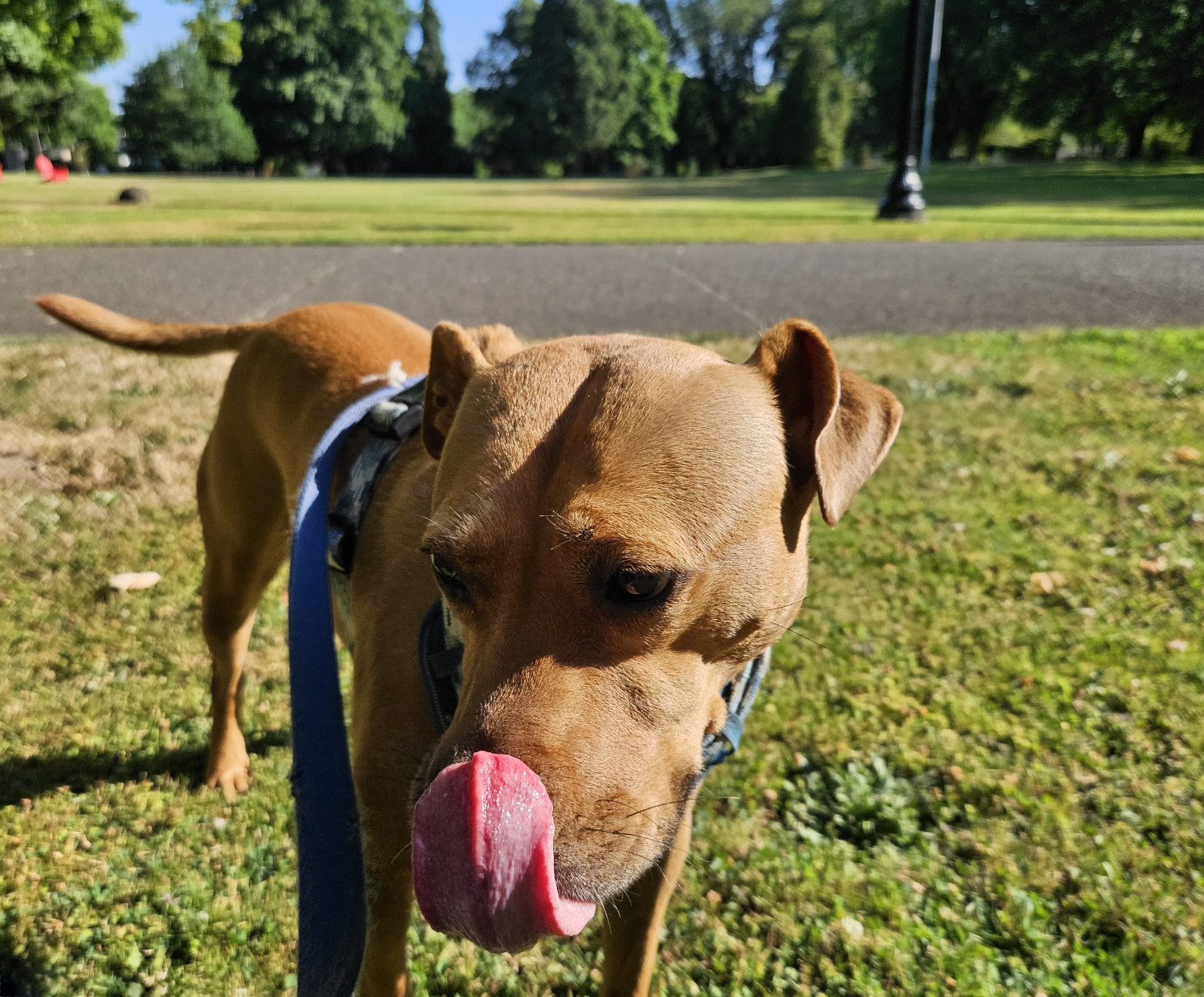
Barley, a dog, stands in a sunny park with an expanse of grass behind her. Turning her head slightly away from the sun, she gives her own nose a real big lick. Taking Barley on walks on a bright and windy day is a distinct experience because she spends so much time simply allowing the world to come to her. We’ll be walking, and she’ll stop and face the wind and stand, her ribcage pulsing from the steady stream of little sniffs she makes to read the news. English does not, so far as I’m aware, have an olfactory equivalent of “staring,” so my temptation is to say that she stares into the distance, but I can’t say for certain how much she’s even paying attention to her eyes. For my part, the whole point of the walks, beyond mere exercise, is to get her out and about and stimulated by the world, so I just stop and wait. Eventually, she brings her vigil to a close with a BIG ole lick to the nose to reset the instrument.
Read more →